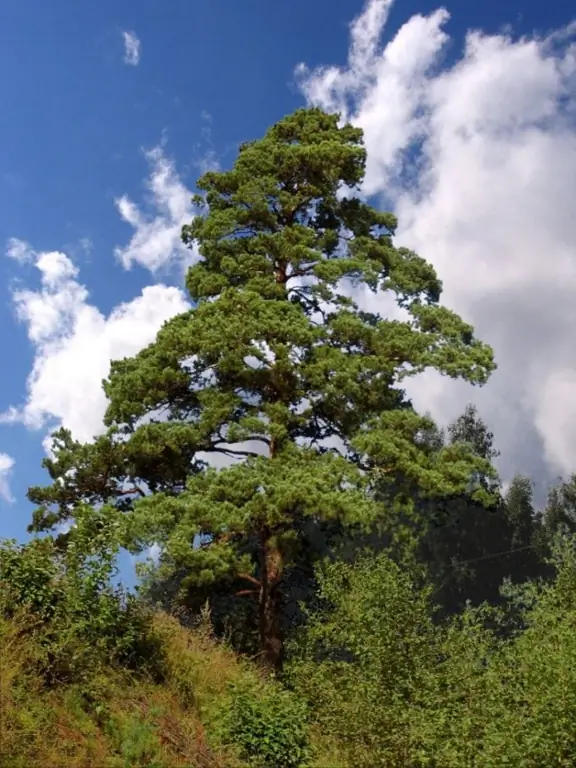Pine is the generic name for many tree species in the pine family. There are more than a hundred species of this tree, which grows in the Northern Hemisphere from the tropics to the Arctic Circle. The undersized, twisted trees in the tundra and in the swamps and the magnificent giants, from which ships have been made since ancient times, are one and the same pine. For a long time, man has been using not only its wood, but also bark, cones, seeds, needles, buds.

The common pine is an evergreen tree up to 40 meters high, living from one hundred to three hundred years. This tree is distinguished by a variety of species: Mediterranean pine, Siberian cedars, shrubs (cedar elfin, mountain pine) - all of these are types of pine. It is unpretentious and can grow both on dry soils and in swamps: a small, stunted plant with a thin trunk in a swamp and a mighty giant with an even trunk on dry and clay soils.
Since ancient times, people have learned to use pine for both industrial and medicinal purposes. Straight, even and tall trees were used to build ships and in construction. Today pine is still widely used in construction and furniture production. A board and a beam are cut out of it, shields are glued from pine slats, which then go to the cladding of houses, for floors, for the manufacture of furniture. As for medicinal use, it has long been noted that resin, buds, needles, bark, seeds have healing properties.
Resin channels run along the entire pine trunk, resin is released from natural cracks and in places of artificial damage to the trunk and closes the wound of the tree, protecting it from the penetration of bacteria. In Russia, pine resin was called resin, it contains 30-35% essential oil and up to 65% of the actual resin. Escaping from damage, it hardens, but remains in a semi-liquid state for a long time due to the high content of essential oil. The gum was chewed to prevent diseases of the teeth and gums, and it was also famous as a wound-healing agent.
The healing properties of pine buds and young shoots in the initial stage of growth were also known. They were cut in the spring, when the shoots did not have time to grow, they made decoctions and tinctures from them. Essential oils, tannins, vitamin C were found in pine buds. Now the kidneys are also used in the form of infusion, decoction as an expectorant, disinfectant, and diuretic.
Pine needles and bark also contain a large amount of essential oils and therefore have bactericidal properties, the needles contain vitamins E and B, Infusions and decoctions of pine needles and bark are used to increase immunity, to treat the respiratory system.
It is impossible not to mention pine seeds, pine nuts and Mediterranean pine seeds. They are widely used in cooking and also have medicinal properties.







